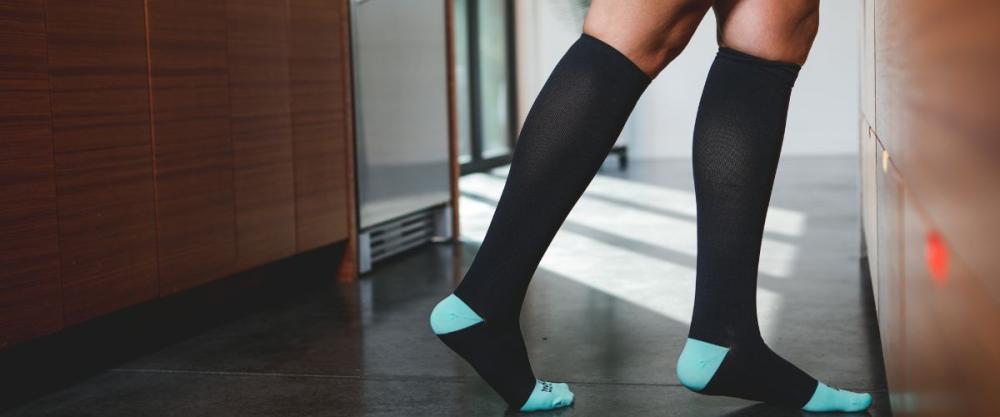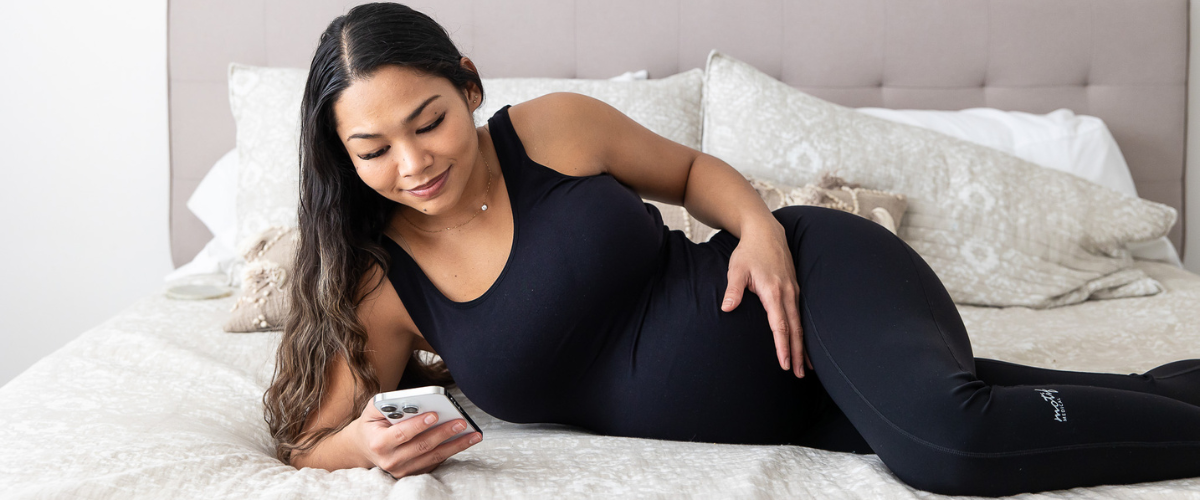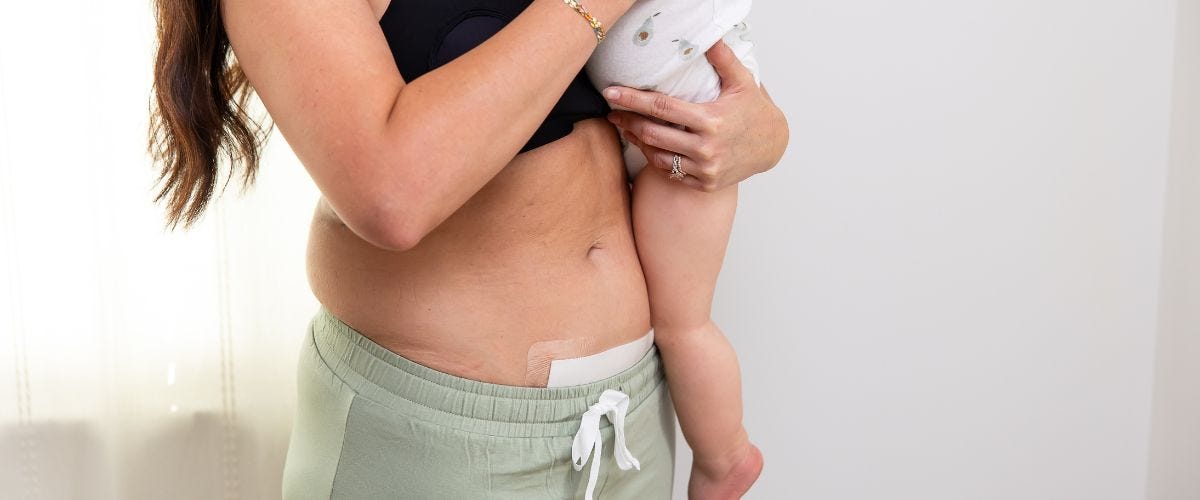Movement during labor is essential in helping to progress your labor and manage the intensity of the contractions. We often think of the baby making their way through the birth canal, and it’s true—they are certainly doing that! But two people are involved in the birth process—the baby and you. When you move, you help baby navigate the available space. If you think about pouring spices through a funnel, when they get stuck, you could put a spoon into them to stir them around and get them moving again, but you’d probably have better results by tapping the outside of the funnel: when you move the funnel, you help the spices move through the space. The same process works for birth! When you move yourself, particularly your pelvis, you enable baby to find its way through.
The Birth Process
Before we talk about great options for birthing positions, let’s quickly overview the birth process. Labor is one part of birth, and it can be divided into 3 sections: early labor, active labor, and transition. The birth process is divided into 4 phases: the first stage of labor is when your cervix opens to allow baby to come through the birth canal. The second stage of labor is when you are pushing your baby out. The third stage is the delivery of the placenta, and the fourth stage is the postpartum transition. All the positions I’m going to discuss can be used at any point in the birth process as long as your baby’s heart rate sounds good. Sometimes your baby can be in a position that causes changes in your baby’s heart rate. If that happens, your obstetrician or midwife will let you know, and they’ll have you move to something else.
Early Labor
In early labor, contractions aren't as strong. This phase is usually when your cervix is dilating from zero to 6 centimeters. Some people describe early labor contractions as menstrual cramps or a dull backache. They are typically further apart (8 or 10 minutes) and shorter (45 seconds or less), although they tend to get stronger and closer as you progress through labor. You can usually continue your usual activities when you're in early labor because while you'll notice your contractions, they aren't strong enough to take your attention away from whatever else you may be doing.
Truthfully, the best thing you can do in early labor is ignore it. If it's dark outside, please sleep! Your body needs the rest you can get during this phase. If it is daytime, you need to eat and drink like you usually do to fuel your body for the work ahead. When you are awake, move around as much as you want to. Walking, doing hip circles on a birth ball, and walking up and down stairs are great options to help your baby move lower in your pelvis.
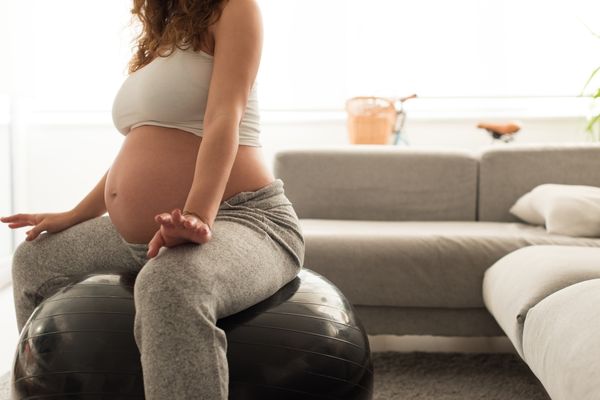

Active Labor
Active labor can’t be ignored. Contractions are often 4 to 5 minutes apart and last for a minute or more. Movement is helpful during this stage, not only to help baby find their best position and work their way through their pelvis but changing positions will also help you cope with labor. I recommend changing positions every 30 minutes or so. Give this task to one of your support people because you will not be paying attention to how long it has been. Eventually, nothing will feel comfortable—which is only expected when a baby moves through your pelvis! As much as you can, move however you need to or want to. And while there are many different positions you can use, they all break down into 4 primary poses: Standing, all-fours, sitting and reclining. In any of these positions, how you move and position your legs will affect your pelvis, which will help create space for baby to move down and through.
Birth Positions
Standing
An upright position uses gravity in your favor to help your baby move lower in your pelvis. You can change it up some by walking or doing lunges. Some hospitals have wireless fetal monitoring systems so you can have more freedom to move, even while tracking the baby’s fetal heart rate. Many laboring moms like to “slow dance” with their partner or doula, as leaning forward in an upright position will help take some pressure off your low back. It’s also a great position for your birth partner or doula to do the double hip squeeze, which can provide immense relief as your baby works its way down.
All-Fours
Hands and knees is a popular labor position. If you’re in the hospital, you can raise the head of the bed to lean on or use a birth ball or a peanut ball under your chest for support so your arms won’t get tired. This position helps rotate a posterior baby or if you have a lot of back pain with your contractions.
Sitting
A sitting position is another great option for labor. You can sit on a chair, birth ball, or stool. If you’re on a birth ball, doing hip circles or figure 8s will help open your pelvis and make space for baby to move on down to the pelvic outlet. If you’re at the hospital, you can even squat on the bed if you want to! Many hospitals now have a birthing bar or squatting bar that will attach to the sides of the bed and extend over the top of the mattress for you to hold while you are in a squatting position. A semi-sitting position is good to try, too. You can recline on one hip or straight onto your back using pillows or a peanut ball for support.
Reclining
If you have a longer labor or once you’re in transition, you’ll probably want to rest between contractions. You can be side-lying on the bed with pillows or a peanut ball between your legs for comfort; this will allow you to close your eyes and catch a quick nap while you rest your body and wait for the next contraction.
In each of the four basic labor positions, you can help create space in your pelvis for your baby by moving your legs in different positions. Your hip joints can be flexed (your knees brought up to your chest) or extended (think of a lunge when your leg is behind you). Extending your hips move your leg bone in the hip socket and makes a little more space at the pelvic outlet. When your hips are flexed, the leg bone is rotated in the opposite direction, which opens the pelvic inlet a little more. Another leg movement that affects the pelvic bones is rotating your knees out, like sitting criss-cross or bringing your knees in with your ankles out. When your knees are out further than your ankles, additional space is made at the pelvic inlet, and when the ankles are out further than the knees, the pelvic bones shift a little to create space at the pelvic outlet. When you have your legs in two different positions, say one hip flexed and the other extended, as in a lunge, you create asymmetry in the pelvis, which helps your baby move through the mid pelvis. That may sound detailed and confusing, but it all breaks down to one simple thing: move your body!
Transition Phase
Transition is when your chosen position may help protect your perineum from tearing. Thankfully, we are past the days of giving birth flat on our backs with our feet in stirrups. Not only does that inhibit blood flow to the baby, but it also limits your movement and makes the pelvic outlet more narrow! Side lying and hand and knees positions both allow freedom of movement for your sacrum and allows your perineal tissue to stretch around the baby’s head as it is born. While the research isn’t clear on which position is best for pushing, some studies indicate that upright positions, including squatting, may increase the risk of perineal tears.2
But what if you have an epidural? How will you move and change positions while you’re in bed? Positioning is where your partner, doula, and other support people will come into play! You can move from side to side in bed and prop your legs up with pillows or a peanut ball to mimic a squat or a lunge while lying in bed. Remember that changing how your legs are positioned changes the shape of your pelvis and will accomplish the goal of moving to help your baby navigate the space. So you can still move, even if you’re staying in bed!
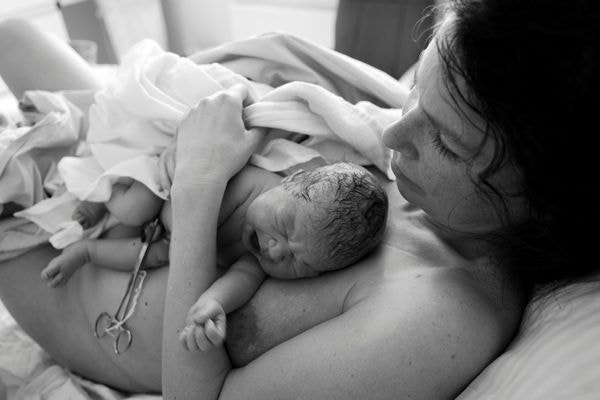

When you’re making your birth plan, be sure to think about any labor positions you know you want to try or also make note of any that you want to avoid. And remember to have a conversation with your healthcare provider about any questions you have regarding your options or movement during the birth process.
Siccardi, M., Valle, C., & Di Matteo, F. (2021). Dynamic External Pelvimetry Test in Third Trimester Pregnant Women: Shifting Positions Affect Pelvic Biomechanics and Create More Room in Obstetric Diameters. Cureus, 13(3), e13631. https://doi.org/10.7759/cureus.13631
Gupta JK, Sood A, Hofmeyr GJ, Vogel JP. Position in the second stage of labour for women without epidural anaesthesia. Cochrane Database Syst Rev. 2017 May 25;5(5):CD002006. doi: 10.1002/14651858.CD002006.pub4. PMID: 28539008; PMCID: PMC6484432.
Information provided in blogs should not be used as a substitute for medical care or consultation.




